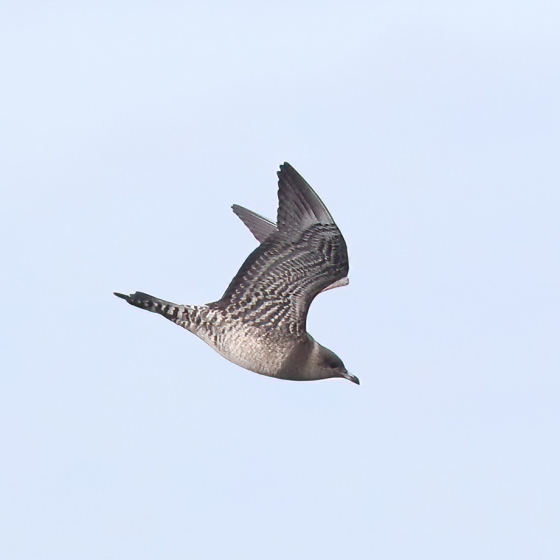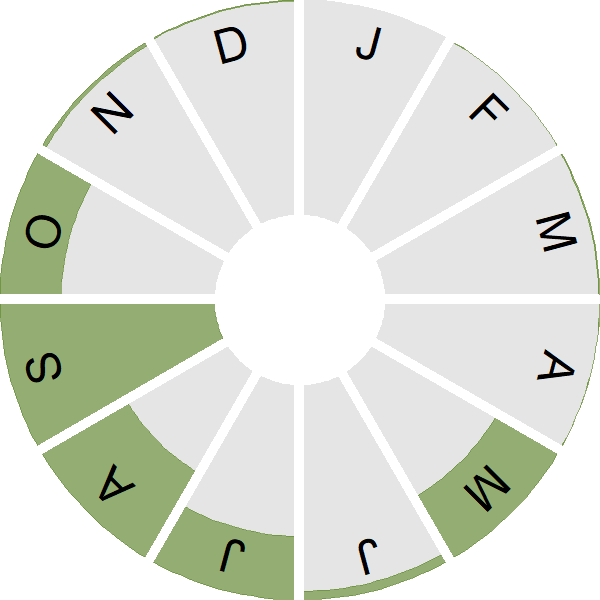Long-tailed Skua

Introduction
A scarce but regular passage migrant. In spring Long-tailed Skuas are more regularly recorded along western coasts, but in autumn they are more regular on North Sea coasts. Small numbers are sometimes recorded from inland locations.

Key Stats
Identification
ID Videos
This section features BTO training videos headlining this species, or featuring it as a potential confusion species.
Skuas
Songs and Calls
Call:
Status and Trends
Conservation Status
Population Size
Population Change
Population trends of this scarce species are not routinely monitored.
Distribution
Long-tailed Skuas are scarce migrants on route to circumpolar breeding grounds. Occasionally birds may summer, as happened during 2008–11 on Shetland. Return passage is mostly in mid autumn but some birds linger into November and were recorded during the winter period of the 2007–11 atlas.
Occupied 10-km squares in UK
2007/08–10/11
or view it on Bird Atlas Mapstore.
2008–11
or view it on Bird Atlas Mapstore.
European Distribution Map
Distribution Change
Change in occupied 10-km squares in the UK
Seasonality
Long-tailed Skua is a scarce passage migrant. Spring passage is mostly confined to May, and return passage is mostly in September and October.
Weekly pattern of occurrence
The graph shows when the species is present in the UK, with taller bars indicating a higher likelihood of encountering the species in appropriate regions and habitats.

Movement
Britain & Ireland movement
European movements
EuroBirdPortal uses birdwatcher's records, such as those logged in BirdTrack to map the flows of birds as they arrive and depart Europe. See maps for this species here.
The Eurasian-African Migration Atlas shows movements of individual birds ringed or recovered in Europe. See maps for this species here.
Biology
Productivity and Nesting
Nesting timing
Egg measurements
Clutch Size
Survival and Longevity
Survival is shown as the proportion of birds surviving from one year to the next and is derived from bird ringing data. It can also be used to estimate how long birds typically live.
Classification, names and codes
Classification and Codes
- Order: Charadriiformes
- Family: Stercorariidae
- Scientific name: Stercorarius longicaudus
- Authority: Vieillot, 1819
- BTO 2-letter code: OG
- BTO 5-letter code: LOTSK
- Euring code number: 5680
Alternate species names
- Catalan: paràsit cuallarg
- Czech: chaluha malá
- Danish: Lille Kjove
- Dutch: Kleinste Jager
- Estonian: pikksaba-änn
- Finnish: tunturikihu
- French: Labbe à longue queue
- Gaelic: Fàsgadair-stiùireach
- German: Falkenraubmöwe
- Hungarian: nyílfarkú halfarkas
- Icelandic: Fjallkjói
- Irish: Meirleach Earrfhada
- Italian: Labbo codalunga
- Latvian: garastes klijkaija
- Lithuanian: ilgauodegis plešikas
- Norwegian: Fjelljo
- Polish: wydrzyk dlugosterny
- Portuguese: mandrião-de-cauda-comprida / moleiro-rabilongo
- Slovak: pomorník malý
- Slovenian: dolgorepa govnacka
- Spanish: Págalo rabero
- Swedish: fjällabb
- Welsh: Sgiwen Lostfain
More Evidence
More evidence from Conservation Evidence.com
Partners
Citing BirdFacts
If you wish to cite particular content in this page (e.g. a specific value) it is best to use the original sources as linked in the page. For a more general citation of the whole page please use: BTO (20XX) BirdFacts Species: profiles of birds occurring in the United Kingdom. BTO, Thetford (www.bto.org/birdfacts, accessed on xx/xx/xxxx).

